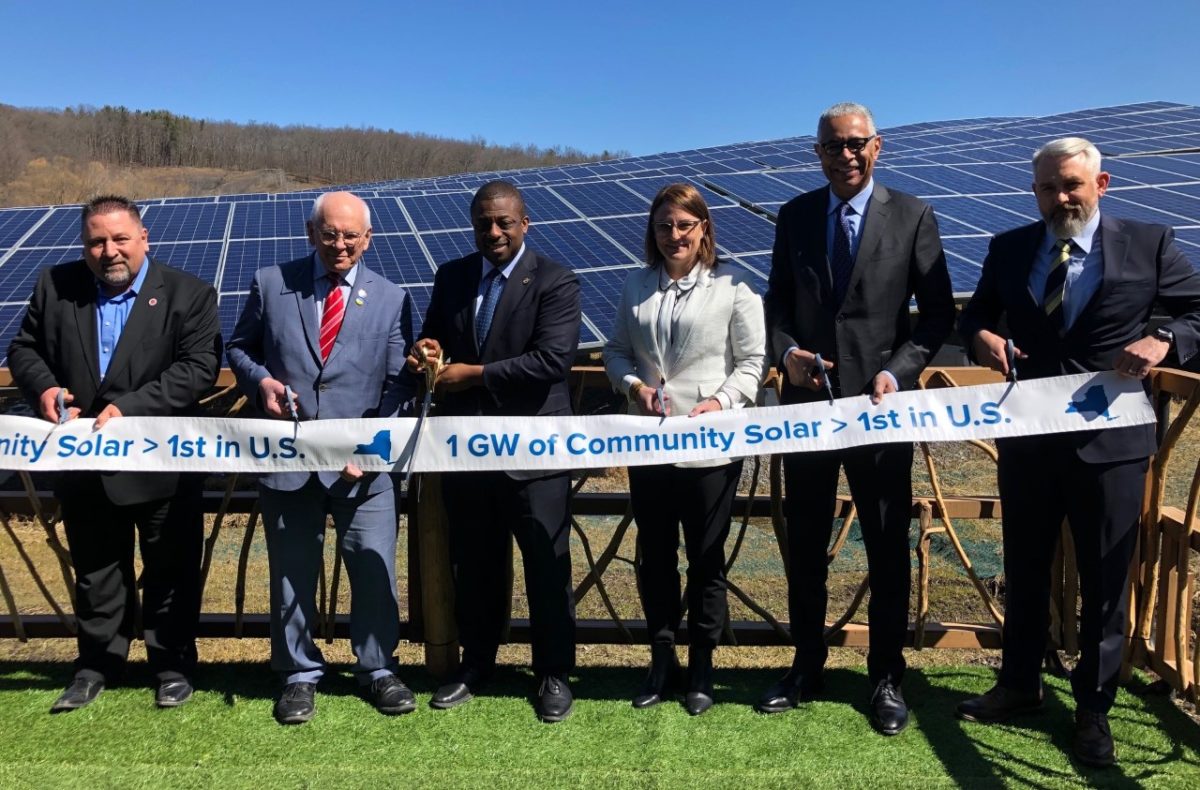If you’ve tried to secure financing to develop a community solar project in recent years, you know options were limited. Banks and lenders often expressed skepticism over the returns from subscription-based renewable energy sources and were uncomfortable with the risk they provided.
But given the Inflation Reduction Act (IRA) that was signed into law last summer, things are looking up. The act’s incentives, including tax credits and direct payments, are combining with a continuously evolving distributed generation market and investors’ greater appetite for community solar to drive an uptick in renewable project financing and deployment.
According to Wood Mackenzie, the U.S. community solar market is projected to grow 118% over the next five years because of the optimism surrounding the IRA. That would come despite a 16% decline in installed capacity in 2022 because of supply chain constraints and interconnection delays.
To tap into this newfound investor interest, maximize the act’s provisions, and enable greater access to community solar, developers must come up with creative deal structures and partnerships.
Unlocking clean energy growth
The IRA represents the federal government’s most significant investment in renewable energy production to date — and it will transform how we power this country.
All told, it devotes nearly $400 billion to clean energy generation through tax incentives, grants, and loan guarantees. It sets the Investment Tax Credit (ITC) at 30% through 2032, allows ITCs to be transferred to unaffiliated taxpayers, and includes bonuses that encourage domestic manufacturing, energy storage projects, and developments in underserved areas like tribal lands and low-income communities. Not only will these incentives drive project development and increase clean energy access to areas that need it the most, but it will also make projects a lot more economical, pushing more and more developers, independent power producers (IPPs), investors, and asset owners to enter the market.
Conveniently, this policy shift comes as community solar is rising as a reliable energy alternative. It provides the benefits of clean energy to subscribers, broadening access to solar energy among residents, businesses, and other organizations that are unable to host their own solar energy systems on-site.
Community solar’s surge in popularity is spurring investor interest and leading to more confidence in project viability. And as subscriber retention remains high, banks are more willing to expand lending for these types of projects, thereby making them less costly to deploy.
Better project economics and more market players drive even greater production and demand for these projects.
Creative financing
So, what are some of the emerging ways developers can get community solar projects financed in this shifting environment?
One important consideration for successfully deploying community solar projects is to secure flexible capital, which minimizes the burden on cash flow. By nature, flexible capital providers often have a higher risk tolerance, and they’re increasingly willing to create specialized debt facilities or carveouts that allow for traditionally non-investment grade exposures — like a community solar project. As interest grows for these types of projects, the need for flexible capital should expand as well, allowing developers to deploy a larger amount of diversified assets.
In order to increase accessibility, developers must consider new vehicles for financing their deals, and how they are structured. More unconventional financing methods for solar, such as an asset-backed securitization (ABS), can leverage a broad portfolio’s proven operational history to secure financing for upcoming projects by using those assets as collateral. Going the ABS route is largely untapped for financing commercial solar projects, especially community solar projects, but can be most efficient for deploying a large portfolio of diversified projects.
Developers must also consider taking new approaches to the way these deals are structured. Some have started to leverage new and alternative metrics for determining community solar subscriber eligibility. Traditionally, community solar projects have used quantifiable metrics, such as FICO scores, to determine subscriber eligibility, which often results in the exclusion of low-to-moderate income groups. By shifting eligibility metrics to take into account things like default rates, projects become more accessible to a wider range of subscribers. The first-of-its-kind ABS deal for community solar, which was structured in this way and utilized these non-traditional metrics, was just closed in late 2022, and it’s only the tip of the iceberg.
It’s no secret that securing funding for projects in the renewables space has always been a bit difficult, but improved project economics from the IRA, and increasing appetite for community solar, will make securing flexible capital and these new financing structures increasingly more viable.
What developers may find most valuable under the IRA is that tax credits can now be used as bargaining tools that help get projects off the ground. Banks have more taxable income than most developers, so they may take on at least a portion of the ITC in exchange for funding community solar projects — an outlay that very well may be less than the tax credit’s value.
Customized arrangements
Looking ahead, community solar’s growth will rely on developers leveraging these approaches to innovative project financing in order to increase solar access and take full advantage of what the IRA has to offer. But they need to keep in mind that this can only be achieved by focusing on building and maintaining strong relationships with banks, lenders, and other equity partners, especially those with an appetite toward supporting community solar.
By fostering these relationships and leveraging the provisions of the IRA, developers will enable broader access to solar energy for years to come. We’ll start to see a greater frequency of community solar, with more projects on tribal lands, in rural and coal communities, and among underserved populations.
The sky’s the limit — and by tapping into this shifting financial landscape for renewables, we’ll light the path to bringing much-needed solar energy to communities across America.

Akash Patel is the VP of underwriting for DSD Renewables and leads evaluation of project and investment opportunities across DSD’s pipeline. While with DSD, Akash has supported multiple capital raises and project financings, ranging from debt to structured equity transactions. Akash began his career at CIT where he was trained in their aerospace and defense group before joining their power and project finance division. Prior to DSD, Akash was at H.I.G. WhiteHorse where he supported high yield debt and equity investments in private, sponsor-backed transactions. Akash holds a B.S. in Finance and Economics from Rutgers University.
The views and opinions expressed in this article are the author’s own, and do not necessarily reflect those held by pv magazine.
This content is protected by copyright and may not be reused. If you want to cooperate with us and would like to reuse some of our content, please contact: editors@pv-magazine.com.








By submitting this form you agree to pv magazine using your data for the purposes of publishing your comment.
Your personal data will only be disclosed or otherwise transmitted to third parties for the purposes of spam filtering or if this is necessary for technical maintenance of the website. Any other transfer to third parties will not take place unless this is justified on the basis of applicable data protection regulations or if pv magazine is legally obliged to do so.
You may revoke this consent at any time with effect for the future, in which case your personal data will be deleted immediately. Otherwise, your data will be deleted if pv magazine has processed your request or the purpose of data storage is fulfilled.
Further information on data privacy can be found in our Data Protection Policy.